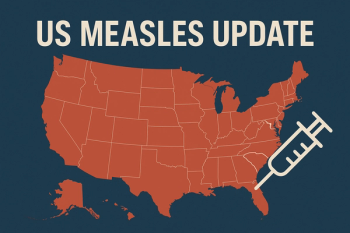
Dolutegravir-Based Treatment More Effective in Children Living With HIV
Dolutegravir-based antiretroviral therapy proved more effective than standard treatments for HIV-positive children, reducing treatment failure by 40%.
Achieving viral suppression with antiretroviral therapy (ART) is critical for people living with HIV. However, children with HIV-1 infection have limited options for ART.
A recent study, published in
The open label, randomized, noninferiority clinical trial evaluated the safety and effectiveness compared ART based on the integrase inhibitor dolutegravir with non-dolutegravir-based standard-care ART. Participants included HIV-positive children and adolescents commencing first- or second-line ART.
The trial, ODYSSEY, included 29 clinical centers across Africa, Europe, and Asia. In response to the World Health Organization (WHO) recommending dolutegravir based-treatment in children, the trial was sponsored by the Penta Foundation and funded by ViiV healthcare.
From September 2016-June 2018, the investigators randomly assigned dolutegravir-based ART (n=350) or standard care (n=357) to 707 children and adolescents living with HIV. The median age was 12.2 years, ranging from 2.9-18 years, and participants weighed at least 14 kg. 49% of participants were female.
A total of 311 participants (44%) began first-line ART, with 92% of the standard-care group receiving efavirenz-based ART. Second-line ART was initiated in 396 (56%) of participants; 98% of the standard-care group received booster protease inhibitor-based ART.
The study’s primary end point was the proportion of patients with virologic or clinical treatment failure. By 96 weeks, 47 dolutegravir recipients and 75 standard-care recipients had treatment failure. The median follow-up time was 142 weeks. Effects of treatment were comparable between first- and second-line therapies.
A total of 35 participants in the dolutegravir group and 40 in the standard care group reported 1 or more serious adverse events. 73 dolutegravir recipients and 86 standard-care recipients had at least 1 grade 3 or higher serious adverse effect. 1 or more ART-modifying adverse event were reported in 5 dolutegravir recipients and 17 standard-care recipients.
Overall, the dolutegravir-based ART reduced treatment failure by 40% in HIV-positive children 3-18 years old.
The investigators concluded that dolutegravir-based ART was superior to current standard-care treatment in children and adolescents living with HIV.
Newsletter
Stay ahead of emerging infectious disease threats with expert insights and breaking research. Subscribe now to get updates delivered straight to your inbox.






















































































































































































































































































